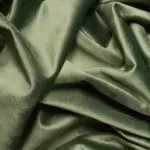When you're choosing between seersucker and jersey, it's essential to consider what each fabric brings to the table. Seersucker's lightweight, textured surface makes it a go-to for hot days, while jersey offers unmatched comfort with its soft, stretchy feel. Each has its own appeal, but the right choice depends on your personal style and the occasion. So, which fabric aligns better with your needs, and how can you effectively incorporate them into your wardrobe? Let's explore the nuances that could influence your next fabric decision.
Table of Contents
Overview of Seersucker
Seersucker is a lightweight, textured fabric known for its distinctive puckered stripes, making it a popular choice for warm-weather clothing. You'll often find seersucker in summer dresses, casual shirts, and even suits, thanks to its breathability and unique style. The fabric's name comes from the Persian words 'shir o shakar,' meaning 'milk and sugar,' a nod to its soft feel and textured look.
When you wear seersucker, you'll appreciate its ability to keep you cool. The puckered texture allows air to circulate, reducing skin contact and helping you stay comfortable in hot weather. Plus, it's typically made from cotton, which enhances its breathability.
Caring for seersucker is relatively easy. It's often wrinkle-resistant due to its texture, so you don't have to worry about ironing it frequently. Just toss it in the washing machine, and it'll maintain its shape and style.
In terms of color, seersucker comes in a variety of patterns, from classic blue and white stripes to more vibrant options. Whether you're dressing up or keeping it casual, seersucker can fit into your wardrobe seamlessly.
Overview of Jersey
Jersey fabric is known for its soft texture and stretch, making it a popular choice for comfortable clothing.
You'll find it used in everything from casual t-shirts to activewear, thanks to its versatility.
To keep your jersey pieces looking great, understanding their care and maintenance is essential.
Composition and Characteristics
Known for its soft texture and stretch, jersey fabric boasts a blend of cotton, polyester, or rayon, making it a popular choice for comfortable clothing. This versatile fabric offers several key characteristics that appeal to many.
- Breathability: Jersey allows air circulation, keeping you cool during warm weather.
- Elasticity: Its natural stretch means it hugs your body without feeling restrictive, providing freedom of movement.
- Durability: Jersey holds up well against wear and tear, making it a reliable choice for everyday garments.
- Easy Care: Most jersey fabrics are machine washable and wrinkle-resistant, simplifying your laundry routine.
You'll often find jersey fabric in items like t-shirts, dresses, and activewear. Its softness makes it a favorite among those who prioritize comfort.
Plus, the blend of materials means you can enjoy a range of finishes, from smooth to textured.
Whether you're lounging at home or heading out for a casual outing, jersey's adaptability ensures you look and feel great. Understanding these characteristics can help you choose the right garments for your lifestyle.
Uses and Applications
When exploring the uses and applications of jersey fabric, you'll discover its versatility makes it ideal for a wide range of clothing options. This fabric is commonly used for making t-shirts, dresses, and activewear due to its stretchy and comfortable nature. Whether you're lounging at home or hitting the gym, jersey provides the right blend of softness and flexibility.
Jersey fabric is also popular in the production of casual wear, such as skirts, leggings, and even sleepwear. Its breathable qualities ensure you stay comfortable throughout the day. Plus, the way jersey drapes allows for stylish and flattering silhouettes, making it a go-to choice for both everyday outfits and special occasions.
In addition to its everyday uses, jersey fabric is often employed in sports uniforms and team apparel. The moisture-wicking properties of certain jersey blends help keep athletes cool and dry during intense activities. You'll also find jersey used in children's clothing, thanks to its durability and ease of care.
Care and Maintenance
Caring for jersey fabric is straightforward, allowing you to keep your favorite garments looking fresh and feeling comfortable with minimal effort.
Unlike some other fabrics, jersey is relatively low-maintenance, but there are still a few key steps you should follow to ensure longevity.
Here's a quick guide to help you maintain your jersey items:
- Wash in Cold Water: Always opt for cold water to prevent shrinkage and fading. It's gentle on the fabric and keeps colors vibrant.
- Gentle Cycle: Use a gentle cycle on your washing machine to avoid stretching or damaging the fibers.
- Air Dry: Whenever possible, hang your jersey garments to air dry. If you must use a dryer, choose a low heat setting to minimize the risk of shrinkage.
- Avoid Fabric Softener: Skip the fabric softener, as it can break down the elasticity in jersey fabric over time.
Properties of Seersucker
Seersucker features a unique puckered texture that enhances breathability and keeps you cool in warm weather. This fabric's lightness and airy nature make it an excellent choice for summer clothing. You'll appreciate how it allows air to circulate around your skin, preventing that sticky feeling on hot days.
Additionally, seersucker has a natural wrinkle-resistant quality due to its construction. The puckered texture helps to conceal any creases, so you can look polished without needing to iron constantly. When you wear seersucker, you can enjoy a laid-back, effortlessly chic aesthetic.
Another significant property of seersucker is its durability. The fabric is typically woven from cotton, which means it's strong enough to withstand regular wear while still maintaining its shape. You won't have to worry about it losing its form after a few washes.
Moreover, seersucker is versatile, making it suitable for various garments, from casual shirts to elegant dresses. Its distinctive look and feel can elevate any outfit, allowing you to express your personal style with ease.
Properties of Jersey
When you consider jersey fabric, you'll notice its remarkable stretch and flexibility, making it perfect for activewear and everyday clothing.
It's also breathable and comfortable, ensuring you stay cool and relaxed throughout the day.
Additionally, jersey is known for its durability and easy care, making it a practical choice for your wardrobe.
Stretch and Flexibility
Jersey fabric stands out for its exceptional stretch and flexibility, making it a popular choice for comfortable, form-fitting clothing. When you wear jersey, you'll appreciate how it moves with you, providing ease of movement without feeling restrictive. This stretchiness is especially beneficial for activewear, loungewear, and everyday outfits.
Here are some key benefits of jersey's stretch and flexibility:
- Comfortable Fit: The fabric hugs your body without being tight, allowing for a flattering silhouette.
- Ease of Movement: Whether you're running errands or lounging at home, jersey's flexibility lets you move freely.
- Versatile Styles: Its stretch makes jersey suitable for various clothing types, from dresses to t-shirts and leggings.
- Durability: Jersey retains its shape over time, so you won't have to worry about sagging or losing elasticity after multiple washes.
Breathability and Comfort
Breathability is one of jersey's standout features, ensuring you stay cool and comfortable throughout the day. This fabric is designed to allow air to flow freely, making it a great choice for warm weather or active wear. When you wear jersey, you'll notice how it wicks moisture away from your skin, helping to regulate your body temperature. This moisture management keeps you dry and reduces the clinginess that can come with sweat.
Jersey's soft texture further enhances your comfort level. The fabric feels gentle against your skin, which means you can wear it for hours without irritation. Whether you're lounging at home, hitting the gym, or running errands, jersey provides that cozy feel you crave.
Additionally, jersey's natural stretch allows it to move with you, offering a comfortable fit that doesn't restrict your movements. You won't feel confined, which is crucial when you're on the go.
Durability and Care
Durability is one of jersey's key attributes, allowing it to withstand frequent wear and laundering without losing its shape or softness. This fabric's resilience makes it a popular choice for activewear and everyday clothing. When you choose jersey, you can expect a low-maintenance fabric that holds up well over time.
Here are some important aspects of jersey's durability and care:
- Stretches Well: Jersey's knit construction provides excellent stretch, which helps it maintain its shape even after repeated use.
- Color Retention: The fabric tends to hold its color well, even after numerous washes, so your clothes stay vibrant longer.
- Wrinkle Resistance: Jersey is naturally less prone to wrinkling, simplifying your care routine and making it ready to wear straight from the dryer.
- Easy to Wash: You can toss jersey items in the washing machine without worry, as they handle regular laundering without significant wear.
With these properties, jersey proves to be a reliable and stylish choice for your wardrobe. You'll appreciate the durability and ease of care that come with it.
Styling Tips for Each Fabric
When you're styling seersucker, opt for light, airy outfits that embrace its casual charm. This fabric shines in warm weather, so think about pairing a seersucker shirt or dress with lightweight linen shorts or a flowy skirt. Accessorize with straw hats and sandals to complete the laid-back vibe. For a polished look, layer a blazer over a seersucker button-up and pair it with chinos.
On the other hand, jersey fabric offers a versatility that makes it perfect for both casual and dressy occasions. When styling jersey, focus on comfort without sacrificing style. A fitted jersey dress can be dressed up with heels and statement jewelry, or you can keep it casual with sneakers and a denim jacket. For a cozy day out, consider a jersey jumpsuit that's both chic and practical.
Always remember, the key to styling these fabrics is to let their natural qualities shine. Seersucker's texture and breathability contrast beautifully with jersey's smooth, stretchable nature, giving you plenty of options to express your personal style.
Choosing the Right Fabric
Choosing the right fabric depends on your specific needs and the occasion you're dressing for. Whether it's a casual outing or a formal event, understanding the strengths of seersucker and jersey can help you make the best choice.
Here are some factors to consider when selecting your fabric:
- Comfort: Jersey is soft and stretchy, making it a great choice for all-day wear. Seersucker, while breathable, has a slightly stiffer feel due to its texture.
- Temperature: If you're dressing for hot weather, seersucker's puckered design allows air circulation, keeping you cool. Jersey can also be breathable but may cling to your body more.
- Style: Seersucker offers a classic, preppy look that's perfect for summer events. On the other hand, jersey provides a more casual, relaxed vibe suitable for everyday outfits.
- Care: Both fabrics are relatively easy to care for, but jersey is generally more resistant to wrinkles and can be machine washed without much fuss.
Frequently Asked Questions
Can Seersucker Be Used for Formal Occasions?
Yes, you can definitely wear seersucker for formal occasions. Just choose tailored pieces in classic colors, and pair them with sharp accessories. It's all about balancing the fabric's casual vibe with polished elements for a sophisticated look.
Is Jersey Fabric Sustainable or Eco-Friendly?
Jersey fabric can be sustainable, especially if made from organic or recycled materials. You should check the manufacturer's practices to ensure eco-friendliness, as some jersey options are more environmentally conscious than others.
How Do I Care for Seersucker Clothing?
To care for seersucker clothing, wash it in cold water with a gentle detergent. Avoid bleach, and tumble dry on low. Iron on a low setting if needed, but seersucker often looks great without it!
What Is the History Behind Seersucker Fabric?
Seersucker fabric's history dates back to the 18th century in India, where it originated as a lightweight cotton. You'll find its unique crinkled texture became popular in the American South for hot, humid climates.
Are There Any Specific Brands Known for Quality Jersey?
If you're looking for quality jersey, check out brands like Nike, Adidas, and Lululemon. They're known for their durable, comfortable fabrics and stylish designs that keep you looking good whether you're working out or relaxing.
- How Does Ring Spun Cotton Affect Garment Fit and Shape Retention? - August 13, 2024
- What Are the Challenges in Producing Ring Spun Cotton? - August 13, 2024
- Is Ring Spun Cotton Suitable for Plus-Size Clothing? - August 13, 2024







